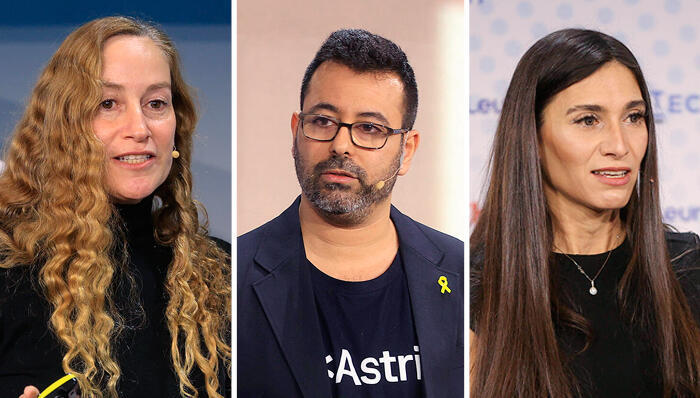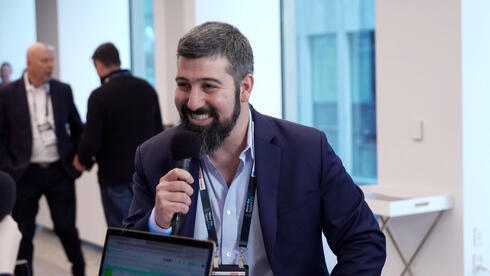
Opinion
Why organizations should let go of the need to predict and control
"Letting go of the fear of failure brings flexibility, creativity and the ability to renew and replenish," writes Yoni Tserruya, co-founder and CEO of Lusha.
Executives and organizations usually aspire to predict and control any situation. It’s a natural tendency - controlling the situation provides security, and the ability to predict the future allows for proper planning and preparation. Reality, however, is a lot more nuanced and complex: results depend on a wide range of factors. The unpredictable nature of human beings—and the intricate dynamics of their interactions—can’t always be explained by simple cause-and-effect relationships.
Complex challenges versus technical challenges
In the technical world, problems—like a malfunctioning car engine—often have clear solutions rooted in direct cause and effect. But in complex systems, like the weather or traffic patterns, outcomes are far less predictable. These systems demand investigation, experimentation, and adaptation on the go.
Humans are complex and unpredictable by nature, and so are the organizations made up of them. The challenges we face in high-tech and beyond are no different. When organizations operate from a place of control, they become locked into rigid plans that stifle adaptability. Initiative wanes as people focus on ticking boxes rather than daring to change direction. Fear of failure replaces the drive to innovate.
Hierarchy Versus Trust
Hierarchical structures may bring a sense of stability, but it doesn’t necessarily promote innovation and creativity. In fact, it often encourages detachment from the true state of things, encouraging a reporting-oriented culture instead of an action-oriented one. When benchmarks such as KPIs become the primary focus employees tend to feel that success is seen as quantitative, rather than qualitative - reduced to numbers instead of meaning. They then cease to serve the true goal of the organization and instead focus on meeting the required quantitative metrics demanded of them - this continues even when it becomes evident that those very metrics no longer really serve the organization’s own goals.
An alternative approach: Vision over control
The path to change begins with a shift in thinking which prioritizes imagination over control, from problem-based thought to forward looking vision-based thought.
Instead of clinging to KPIs organizations should encourage employees to dream, to envision - what would this look like at its very best? What would it look like in three or six months time? In a year? When we envision the future and not just some bottom-line figure then the goal remains front and center, but the path to it is more flexible and receptive to necessary adaptations.
Additionally, goals framed in words spark emotional connection and commitment far more than those set in numbers. I too am fond of Excel spreadsheets, but which draws you in better: “attaining 100,000 clients”? Or “creating a product which makes the lives of salespeople all across the world better”? The dream, the vision, is the true goal. We can look back on the KPIs to help us gauge whether we’re in the right direction, that things are indeed progressing properly, but they are forever merely means to an end. The dream, the vision, is what truly propels us forward.
Fear Versus Love
When an organization ceases to operate from fear and the need to predict and control it makes room for love, passion and inspiring visions. “Only love produces creativity” because creativity blossoms when people feel safe to express themselves, to try out new things, to make mistakes and to learn from them. Fear depresses creativity, and in the business environment of our day organizations that refuse to evolve risk their own oblivion. Moreover, those organizations that lead from a place of love not only do better, but become something people love to be a part of which, in return, enables it to become a game changer that rewrites the rules and opens new realms of opportunity.
Choosing Courage and Releasing Old Patterns
It takes courage to make such changes. It isn’t trivial to let go of those well-established patterns of control and numbers based management, but it is nonetheless imperative. The future belongs to those organizations that dare to let go, to dream and envision, to build a culture of trust and creativity. It not only turns the organization itself into a more creative and successful one, but also one with happier employees who inspire one another, empowering each other with the deep joy of creation. It is a challenging shift - but it is worth the effort. “The future doesn’t emerge from control—it’s born the moment we dare to imagine a better world.”
As an entrepreneur and the CEO of Lusha, where I’ve spent most of my professional life, I don’t approach situations with ready-made answers and notions about what an organization is, what a “CEO” should be or what the right way to “manage” is. Yes, it can be challenging - I learn everything for the first time as I go. However, in this age of constant change where well-established axioms regularly shatter to pieces, and organizations face a constant need to reinvent themselves, it is clear to me that it’s also a real advantage. Being at ease with not knowing in advance is my power, because constant learning is the key to success.
Letting go of the fear of failure brings flexibility, creativity and the ability to renew and replenish.
Organizations that let go of fear and embrace love and passion will not only succeed more—they’ll become places people want to be part of, and clients want to do business with.
Yoni Tserruya is the co-founder and CEO of Lusha.















